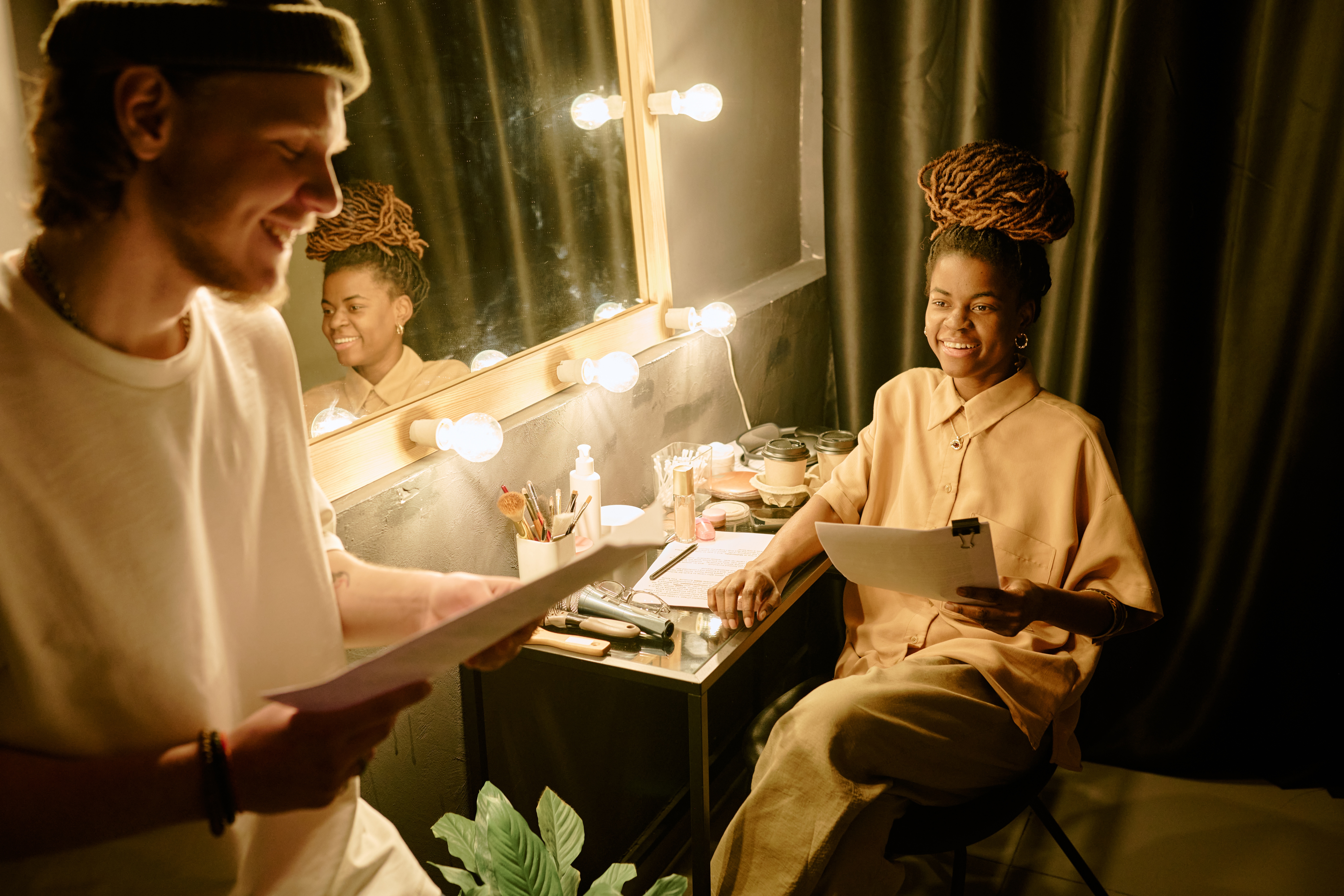DCPA NEWS CENTER
Enjoy the best stories and perspectives from the theatre world today.
Enjoy the best stories and perspectives from the theatre world today.

It takes a lot of concentration to do live performances, and there are plenty of skills we can take home from those practices.
Stop, breathe, crack your neck, now focus.
Paying attention and focusing on another person, a task, an event, or even yourself is not always a natural reaction, or as simple as wanting to. Yet the skill of centering oneself is paramount in theatre. You need the focus to remember lines, stay in character, and to drown out anything distracting in the background.
The same need for centering comes up in life too. So, as acting imitates life, so can life imitate acting through the art of finding focus.
UNDERSTANDING HOW TO FOCUS
Anything you practice enough can become a skill, and focus is one of them. Think about how an actor prepares for a role. There’s repetition to the work, rehearsal, running lines, and doing something again and again. Not only do these rituals help the performer memorize a character and scenes, but the activities also strengthen the ability to focus.
Another thing many actors do to prepare is a pre-show routine, which helps get their head into the show. Try this at your own work or before a task where concentration is paramount. It can look like a brief meditation, a catchy song sung, or a handful of jumping jacks done right at the desk. Whatever you do, do it each time to signal your brain that it’s time to pay attention.
MINDFULNESS AND MEDITATION
If you’ve ever taken a yoga class and practiced breathing techniques to center yourself, you know it can help with focus. Step out of the studio and bring this skill to the home, to work, to the car, and to meetings. A few deep, mindful breaths can calm the nervous system and clear the mind. A good method for breathing is the fours — slowly breathe in for four seconds, hold for four seconds, and then gradually release the breath over four seconds.
Another great theatre practice consists of taking a body scan. How do your legs feel? Can you relax your shoulders? Sit up straight like a string is being pulled up your spine and through your skull. Breathe into the body and aim to clear all distractions.
USING MOVEMENT EXERCISES TO FOCUS
Any doctor will tell you physical activity is good for the body and brain, so it makes sense to warm up the muscles. In the theatre a lot of creative movement is used to loosen up actors and get their head in the role. Improvisation is used to prepare the body to focus. Even creating a dance-story with your body will open the mind and allow creativity to blossom.
Stretching and twisting gets the blood flowing. Tai Chi and yoga can help reduce tension and bring about body awareness. Hula hoop, take a short jog, or jump rope to get the heart rate going, which can clear the mind and ready it for concentration.
SENSORY AND OBSERVATION
It’s not uncommon to be in a busy space and have trouble concentrating on the task at hand. Take a deep breath and a step back and observe an object or a person. For actors having trouble focusing during a scene, using a prop to ground the brain can really help. Try this in the wild and take in the details, list them in your mind, and paint the picture. This can help center your brain and give it a break from whatever it is you’re attempting to focus on.
CIRCLES OF ATTENTION
This Circles of Attention is a mode of concentration that dates to the early 1900s, when the Russian theatre director Constantine Stanislavski coined it. Since then, the style has been used in modern method acting to progressively focus on a role, situation, and setting. Of course, these techniques can also help someone in their day-to-day life.
The first circle involves talking to the self, or imaginary solitude. In real life the action can help you focus by going inward and telling yourself what you need to do and what to pay attention to. For example, if in a noisy room, step back and let those distractions fade away as you search inside your mind for the heart of the task at hand.
With the next circle, the idea centers on focusing on another person or persons through conversation. After that, move attention to the whole world, which in regular life is more about projecting your thoughts and feelings to other people. Using these techniques can help to calm scattered thoughts and improve the way you engage with other people and situations. Not only do you project focus and attention, but also become open to receive it.
No matter which mode of concentration works for your brain, these tools can help pinpoint focus and make the performance of life go smoother.
